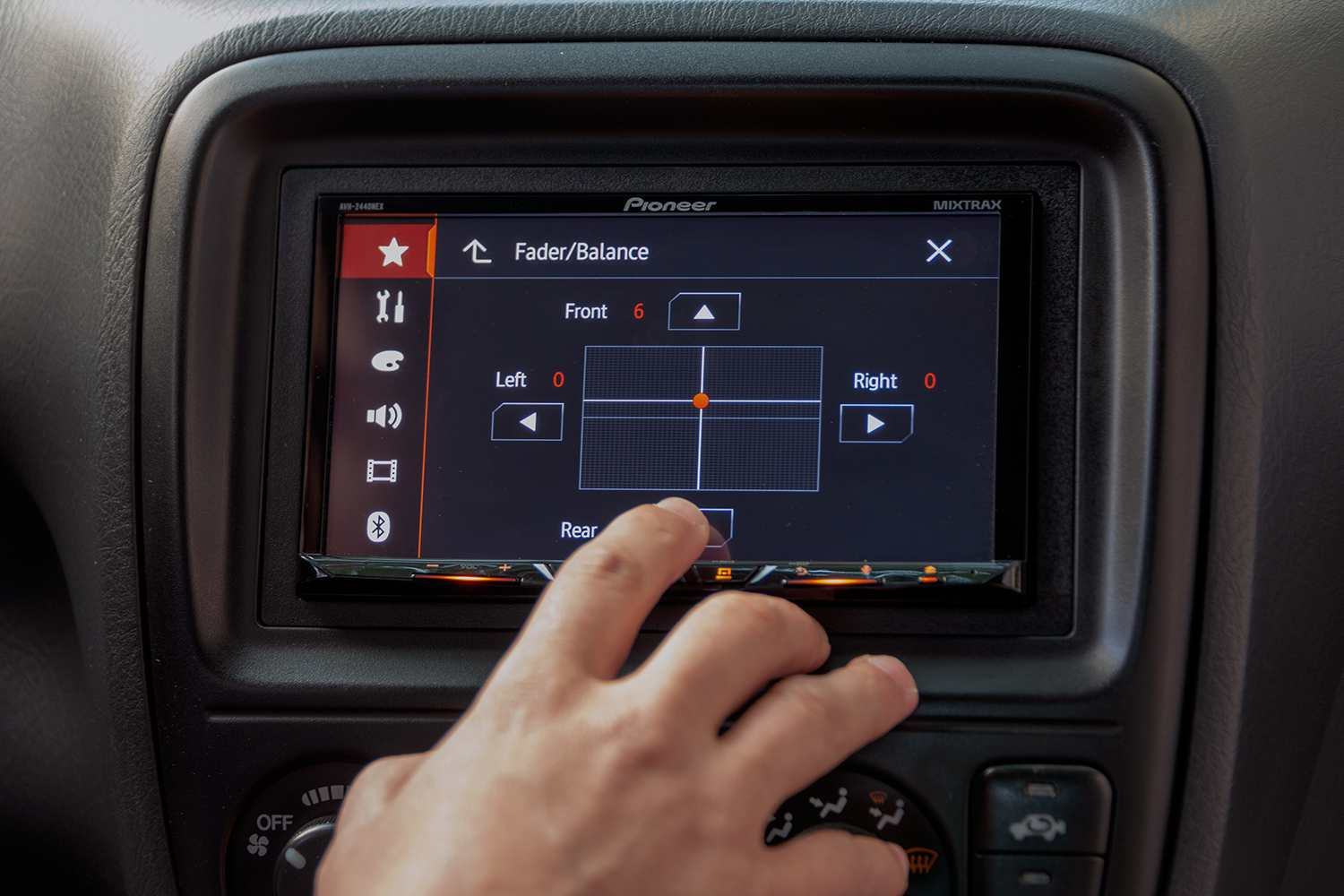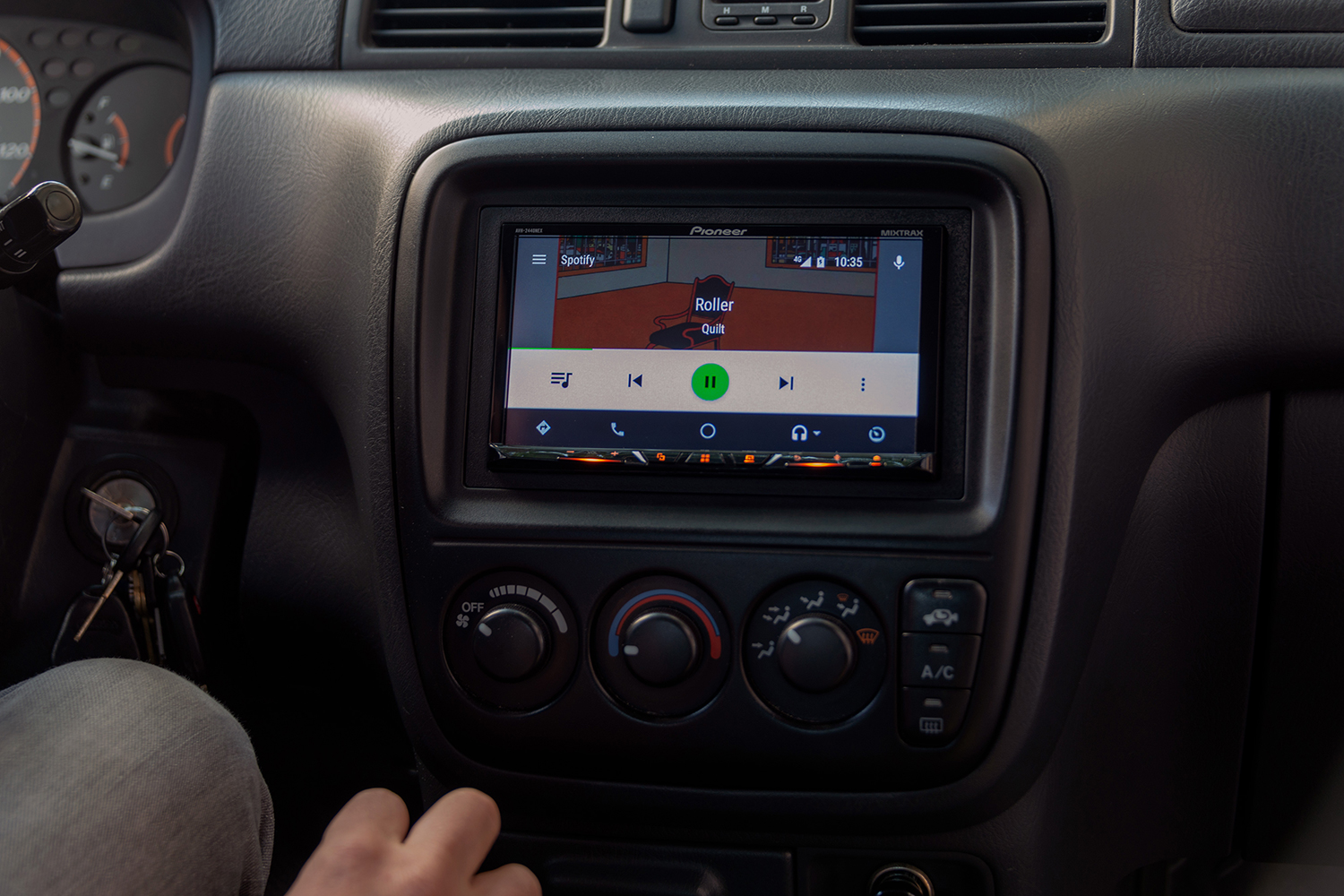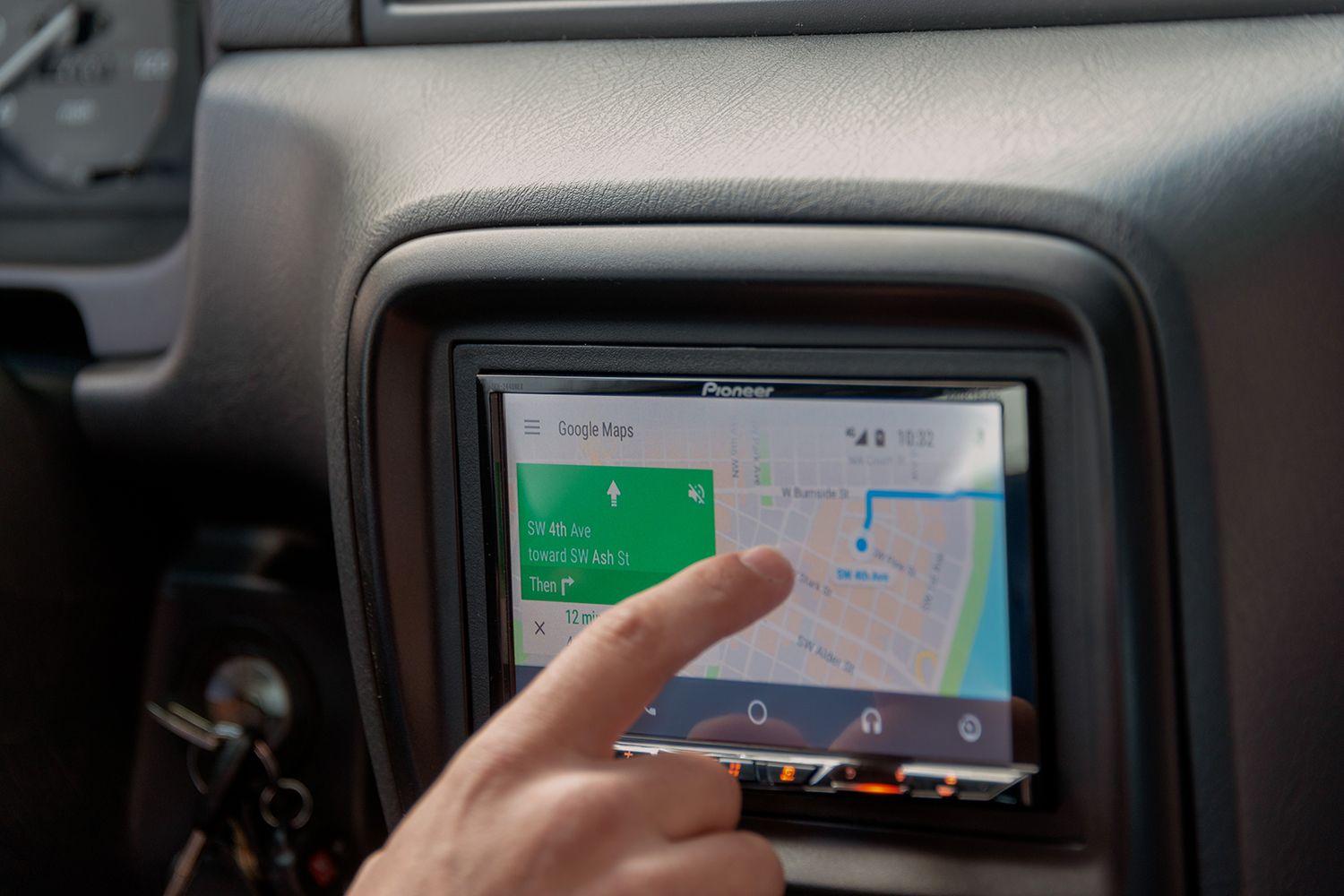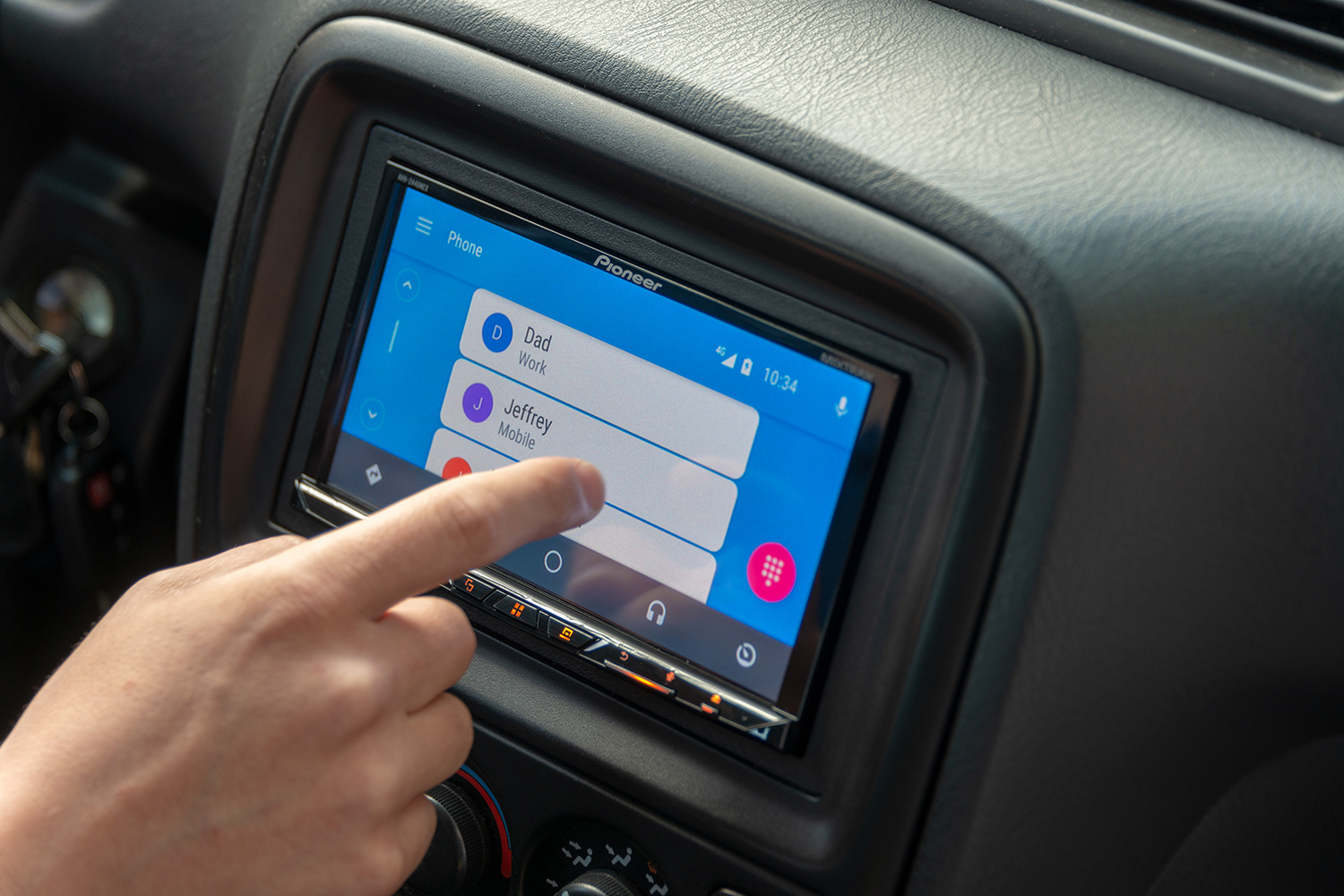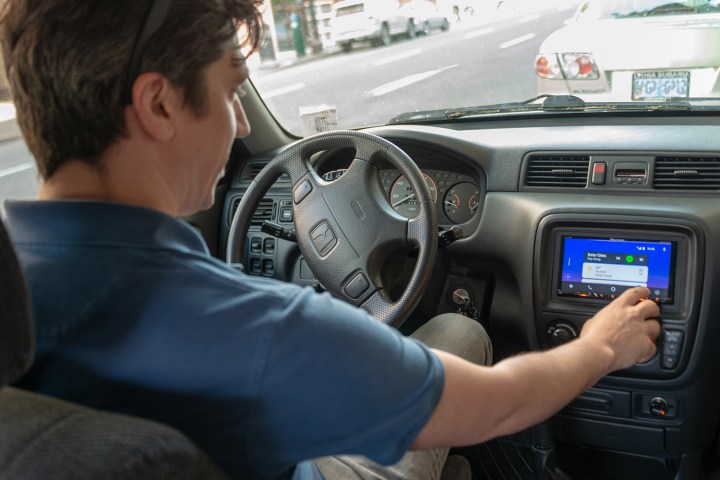
Contrary to popular belief, you can in fact teach an old dog new tricks. As the proud owner of a once destroyed, later abandoned, and now reborn 1999 Honda CR-V, I should know.
Following a timing belt catastrophe that definitely could’ve happened to anyone (and definitely had nothing to do with me procrastinating for 45,000 miles), I had two choices: I could let my companion of 10 years die an unceremonious death in a scrapyard, or I could sink an embarrassing amount into giving it a new lease on life.
I chose the latter. One new clutch, timing belt, and water pump later, there was just one thing left to do: Outfit my new(ish) baby with a badass stereo.
Enter Pioneer and its sparkling new Z-series speaker system. Thanks to a custom install from the local gurus at Portland’s Stereo King, these audiophile-aimed speakers — matched up with a Pioneer deck (and even a backup camera) — transformed my aging rig into a modern conveyance that even my wife’s new car can’t match. Dog, meet trick.
The gear
The beauty (and challenge) of any car installation is that no two are exactly alike – they’re tailored to the owner. From lawnmowers and mulch to tower speakers and 65-inch TVs, my ride gets plenty of chances to put the “utility” in SUV. So before considering massive subwoofers and power amps, I wanted to make sure I could still haul gear.
Before considering massive subwoofers and power amps, I wanted to make sure I could still haul gear.
Pioneer’s shallow-mount 10-inch sub, the TS-Z10LS4, was the perfect fit for the scenario — literally. Stereo King built a custom carpeted box for the installation, with the sub firing downward, powered by Pioneer’s GM-D9605 Class D 200-watt amp tucked neatly under the driver’s seat. The box is a bump in more ways than one, but it still leaves plenty of room for the next Costco grocery haul.
Next up were the front door speakers, which we replaced with Pioneer’s TS-Z65CH 6.5-inch component speakers, big drivers in the kick panel, tweeters just above. Side note on the original gear: Honda didn’t skimp as much as I’d expected on the OG speakers, even packing in small coaxial tweeters in one of the pairs. Of course, the higher position of the separate tweeters makes the faster, more directional frequencies much clearer.
The back speakers were replaced by a pair of TS-Z65F 6.5-inch speakers with coaxial tweeters built in. Finally, the entire system is powered by the AVH-2440NEX receiver with 7-inch display, Bluetooth, Spotify, and both CarPlay and Android Auto support.
Wired in
Before we get into the performance, a few notes on Android Auto and the AVH-2440NEX.
The vast majority of Android Auto or CarPlay systems, including mine, require you plug in your phone. We say the majority because, as of May 2018, the latest Pioneer receivers offer wireless connection to CarPlay or Android Auto — something prospective buyers may want to keep in mind. I love Android Auto, but it’d be nice if it just auto-connected wirelessly, and luckily the latest systems do. Due to the inherent legalities of in-dash systems, it’s also hard to adjust to some of the restrictions Android Auto mandates when driving, like the inability to type commands into the system without the brake on, even with a passenger present. That said, a recent update allows passengers to unlock the phone when driving for direct control — a nice addition.
It’s awesome to have apps like Google Maps and Spotify on the big screen.
As for the receiver itself, it got a bit confused a few times when I lost cell connection, trying to play the source when nothing was connected and occasionally requiring me to disconnect and reconnect the phone. Like a lot of in-car systems (my wife’s Corolla won’t even connect to my V30), the 2440NEX also seemed to get a bit confused when connected to multiple phones via Bluetooth, occasionally freezing or delaying playback.
Minor quibbles aside, though, the NEX deck is an epic upgrade. It’s awesome to have apps like Google Maps and Spotify on the big screen, wireless audio connection is crystal clear, and I’m still getting used to having a backup camera in my old-school car. It really does make the whole cabin feel more modern.
Once you get the hang of it, the AVH-2440NEX also makes it extremely easy to operate and customize everything, from illumination and source selection to fade control and Bluetooth playback. The 13-band touch EQ is especially handy, even providing two custom templates so you can save one setup for in-town driving and one for the highway. You can also do much more, of course, like hands-free calling and text messaging.
Let it loose
It’s hard to overestimate the improvement a well-powered, versatile speaker system like the Z-series can make to a car’s audio system. Built to offer an extra punch of tactile clarity and treble definition than even Pioneer’s recently released D-series speakers, the Z-series has completely transformed the way I listen to music in the car. It’s no longer background noise or some sort of approximate semblance of the music on deck, it’s now a full-on experience.
The Pioneer Z-series speakers have completely transformed the way I listen to music in the car.
It wasn’t a party right out of the box, though. When I first got the system setup, it took some real hands-on time with the EQ, some pushing back and forth with the fade and balance of the speakers, and — even at the -3dB crossover setting — some break-in time with the taut Z-series tweeters to smooth out the treble and get them to meld with the rest of the system. I have no idea why so many people are all about that bass and treble when it comes to car systems, but pounding beats matched by ear-bleeding treble is not my bag. Once I got the settings dialed and let the speakers settle in, however, things really began to sing.
Remember cymbals? The metallic spark as wood meets nickel, ringing in space with gleaming clarity? With the Z-series speakers, I was reintroduced to cymbals in the car (and other percussion for that matter) in a way I haven’t heard in years. Vocals also take on a whole new form of fidelity and detail, while brassy guitars and other midrange instruments are layered in clear-cut rows of sound spread throughout the cabin. The buzzing of electronic synths, the reedy rasp of tenor sax, and the glowing ring of golden brass are all wonderfully rendered by the Z-series, allowing the nuances and subtle details of recordings to finally rear their heads in my mobile listening room.
But I must admit, while everything from Radiohead to The Decemberists are made whole again by the Z-series speakers, transforming my car’s flat-sounding cabin into one with rich and palpable dimension, I missed the bump of a real hip-hop beat on the road more than I knew. Not since my high school days — when saving up for a Rockford Fosgate or Pioneer system to rumble your trunk like the stomp of a T-Rex was a rite of passage — have I had real, meaty bass response in my vehicle. And I like it.
It’s not just a bowling rumble, either. The TS-Z10LS4 offers tight, responsive, and musical bass, creating a smooth and controlled backbone on which the rest of the music rides. From Too Short to Tupac, Kanye to Kendrick, hip-hop is back in my road-trip playlist in a big way — even when the car is loaded to the gills with gear.
Conclusion
While car stereo store shelves are littered with speaker choices, Pioneer’s Z-series stand out as a brilliant way to make mobile music fun again. Even if you’re rocking an old ride — especially if you are, in fact — the combination of a Pioneer Z-series speaker system and NEX deck is a great way to drag an aging vehicle squarely into the 21st century, and do it in style.









